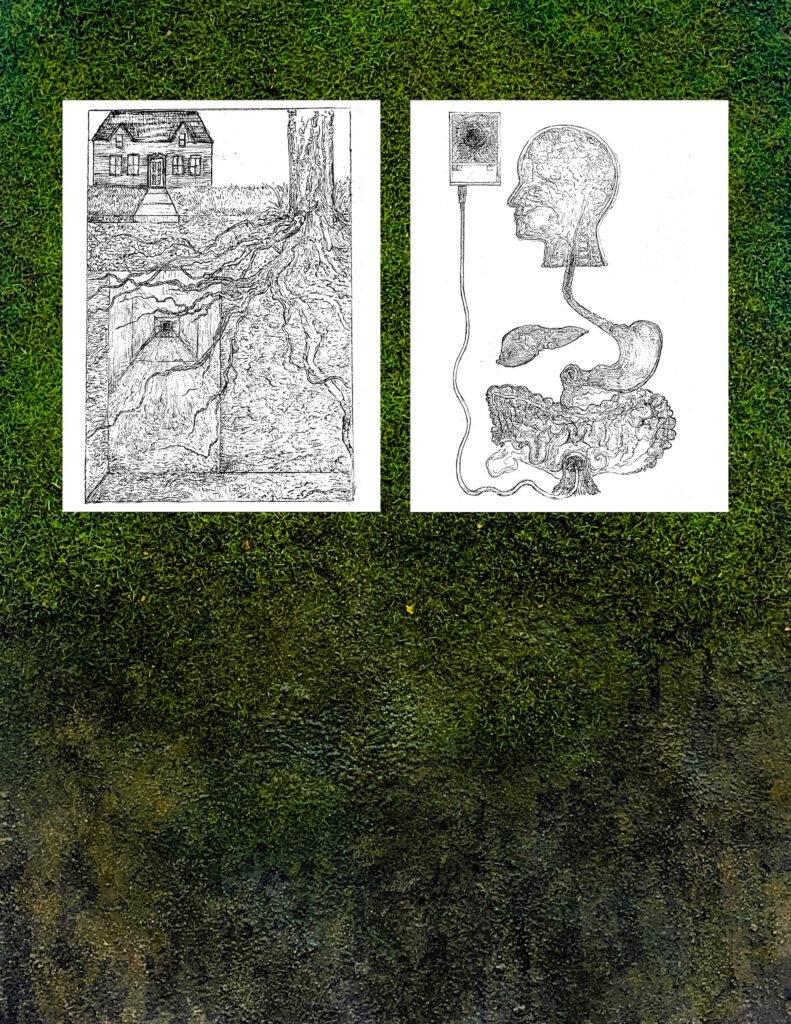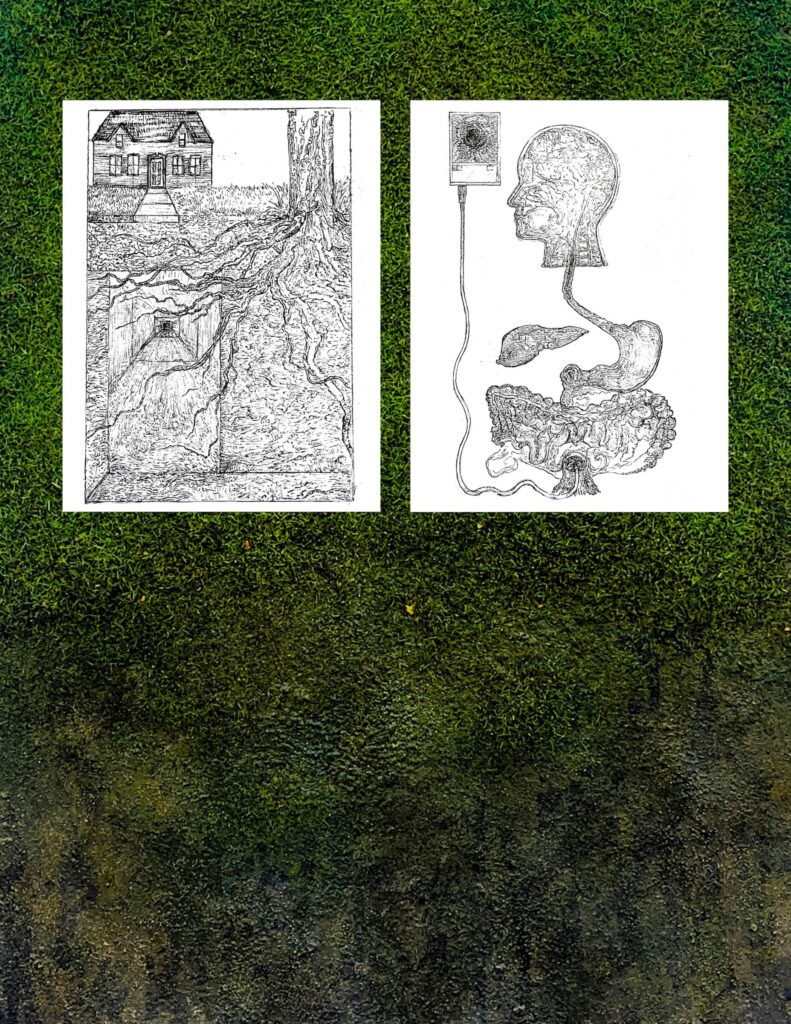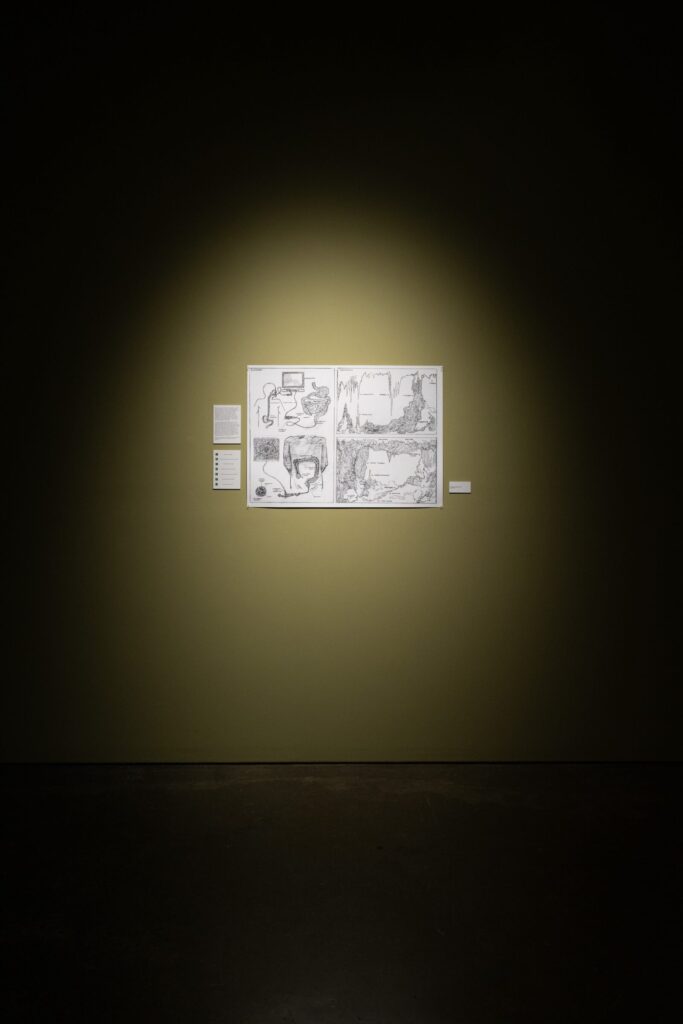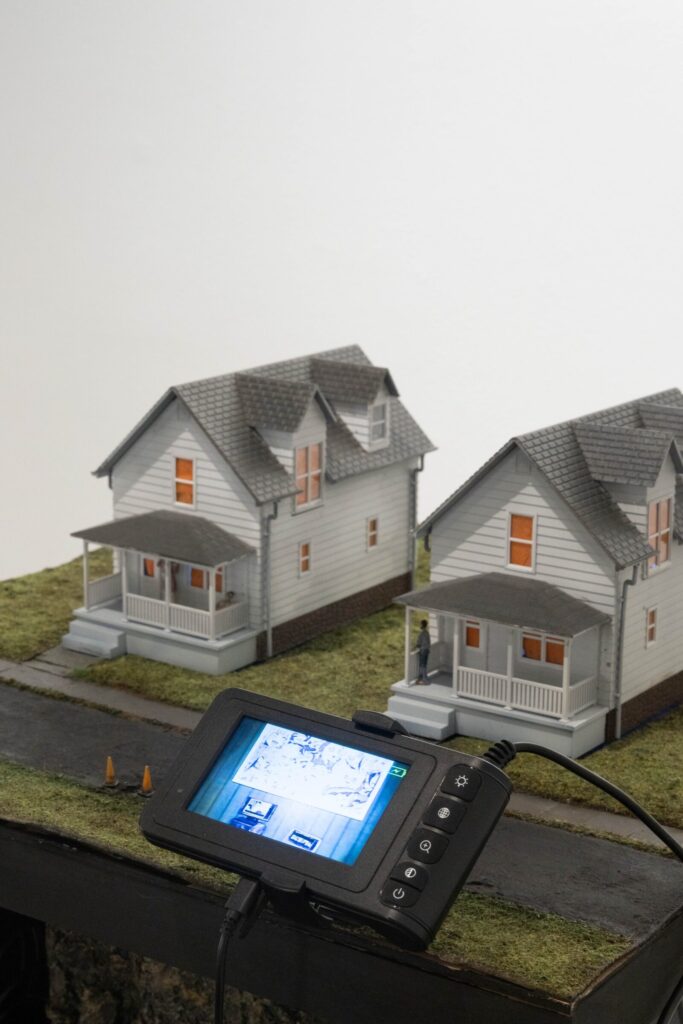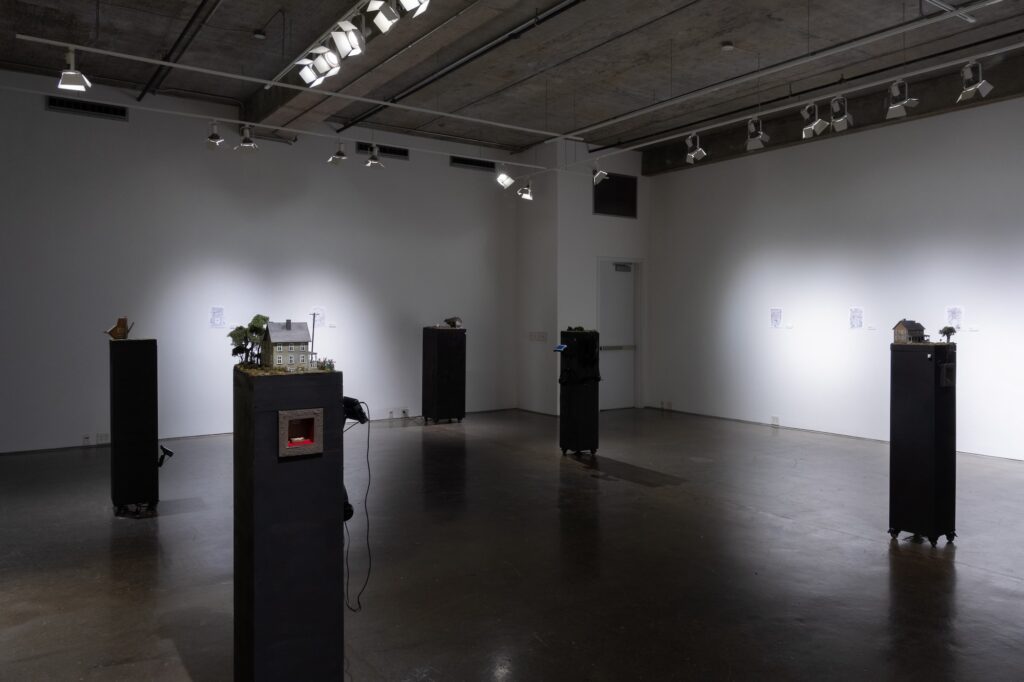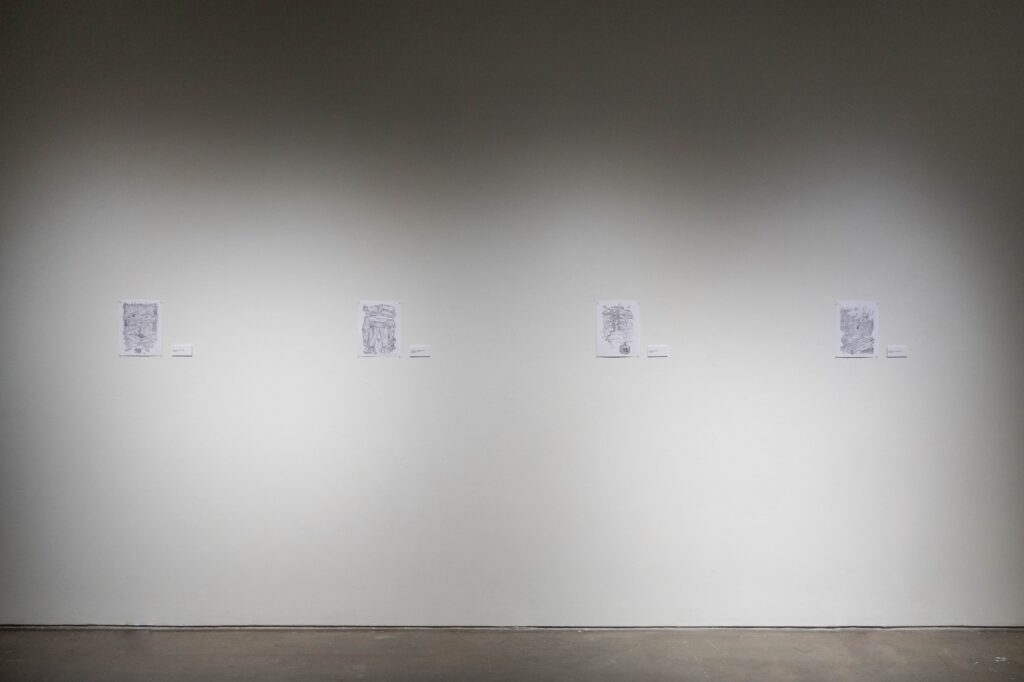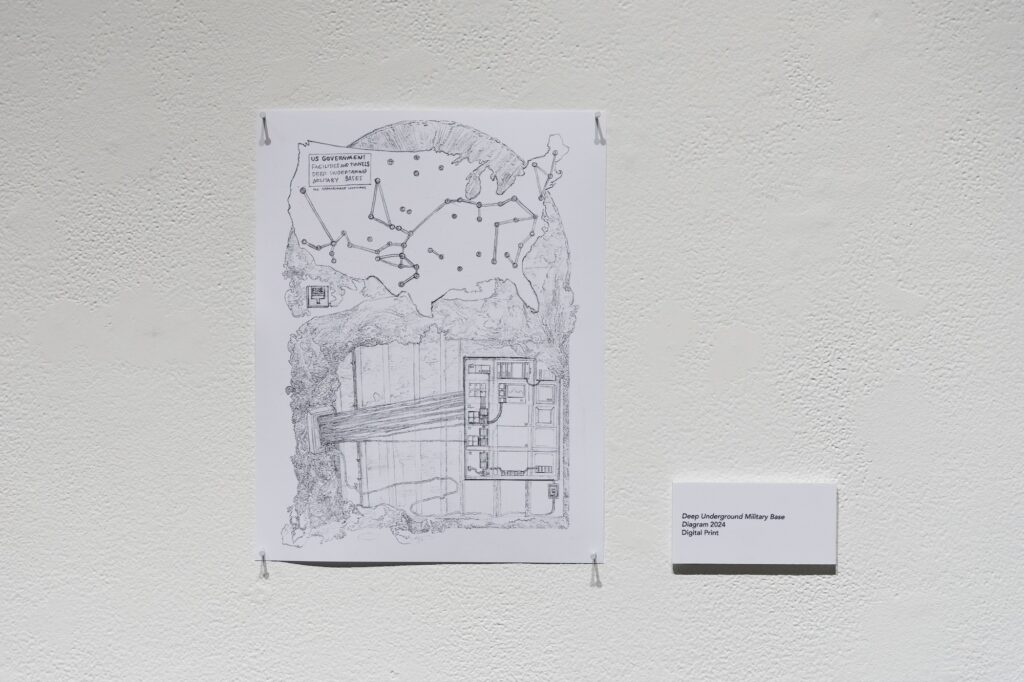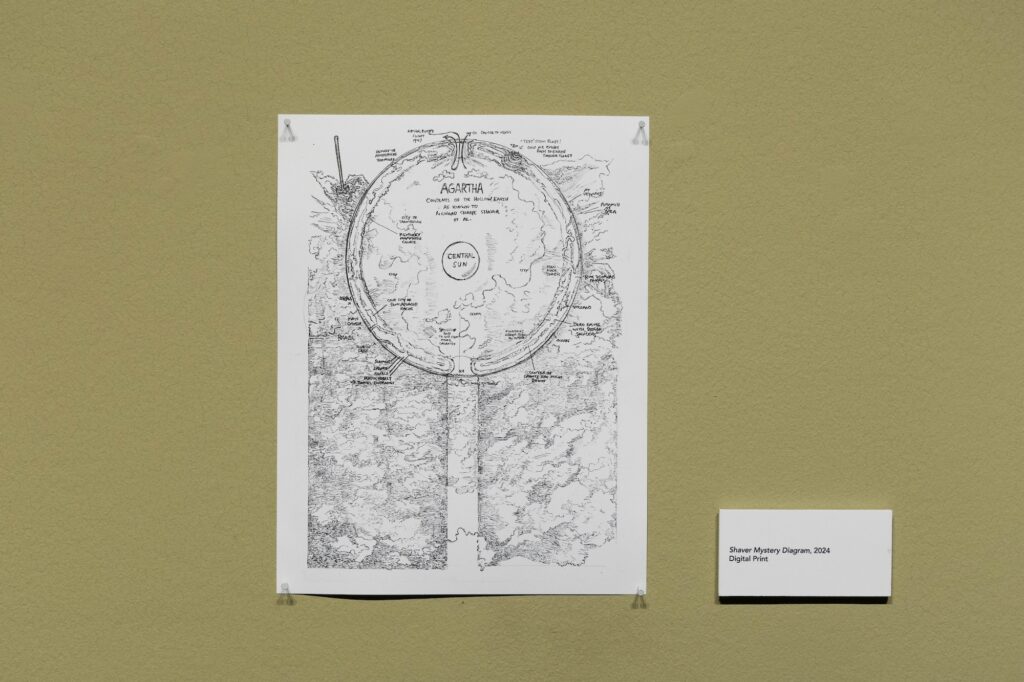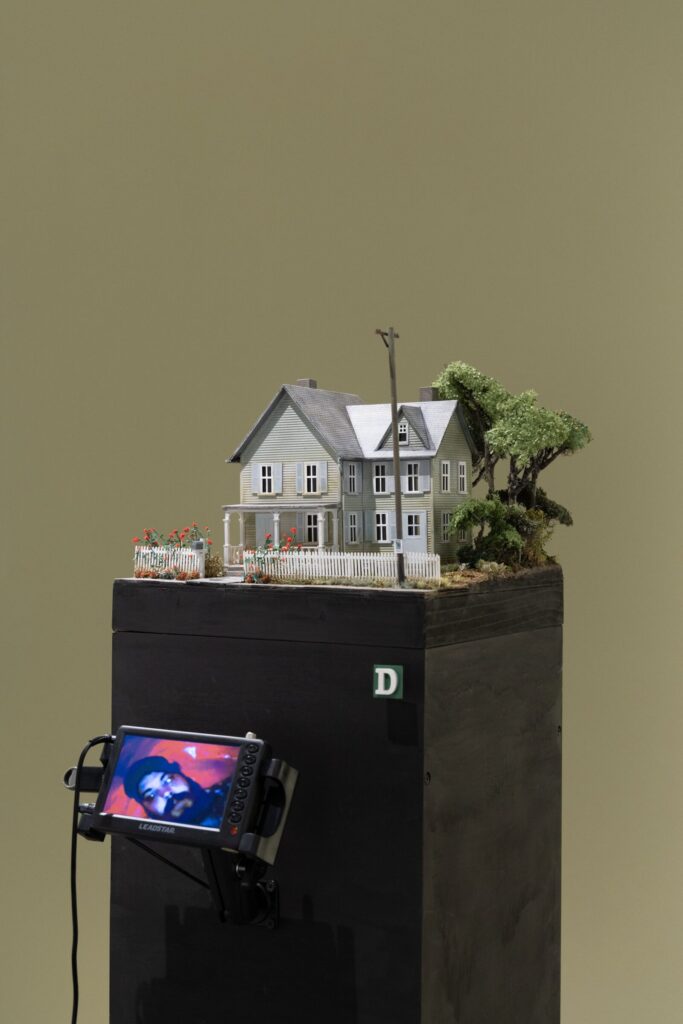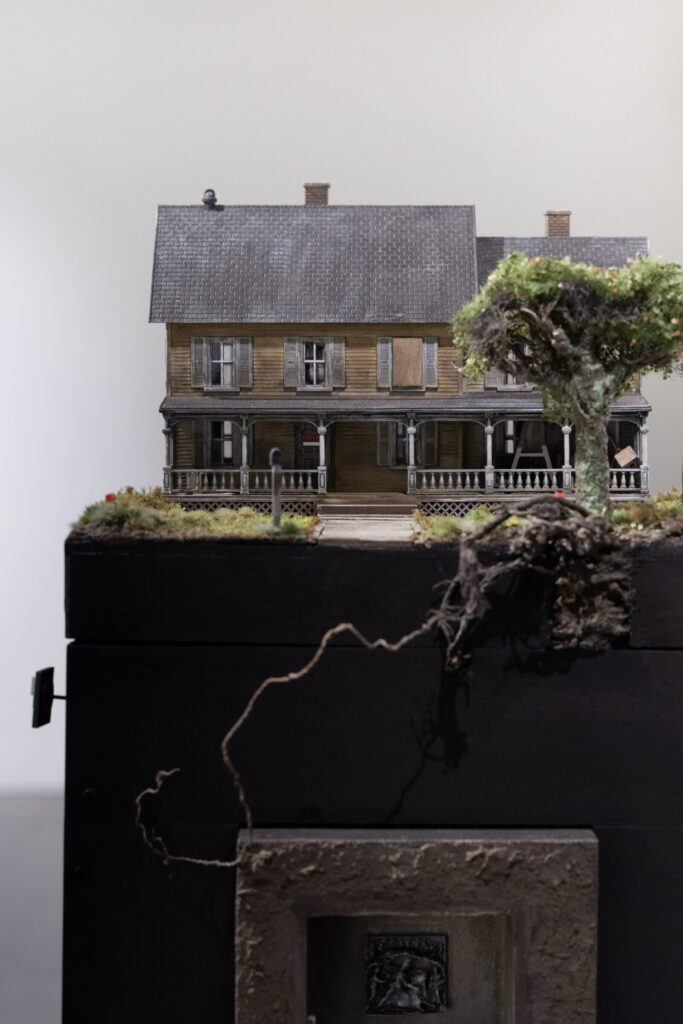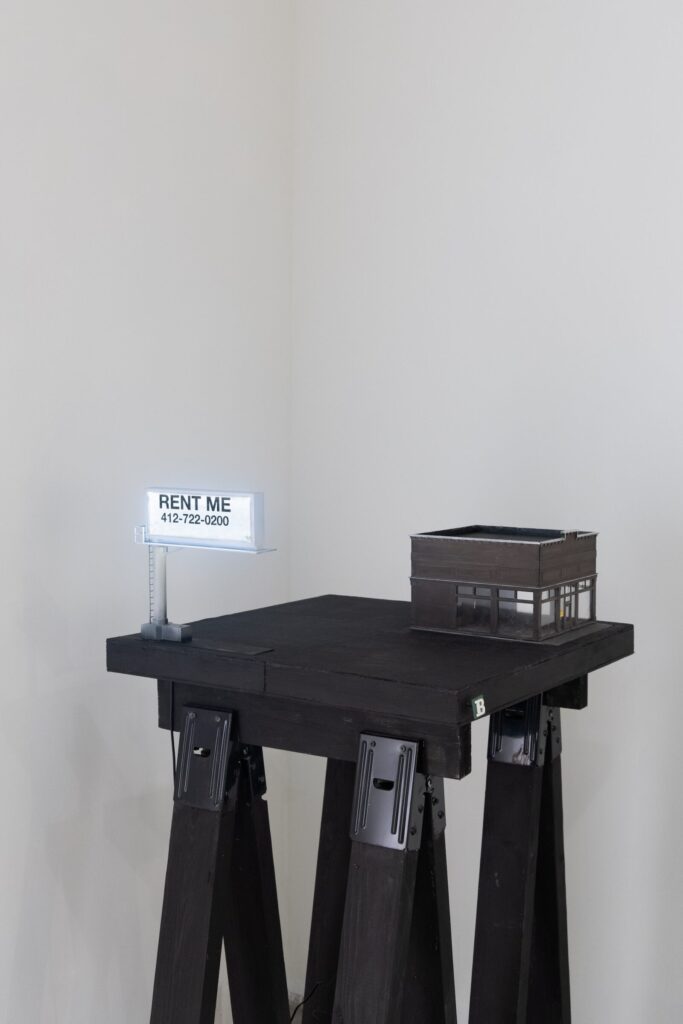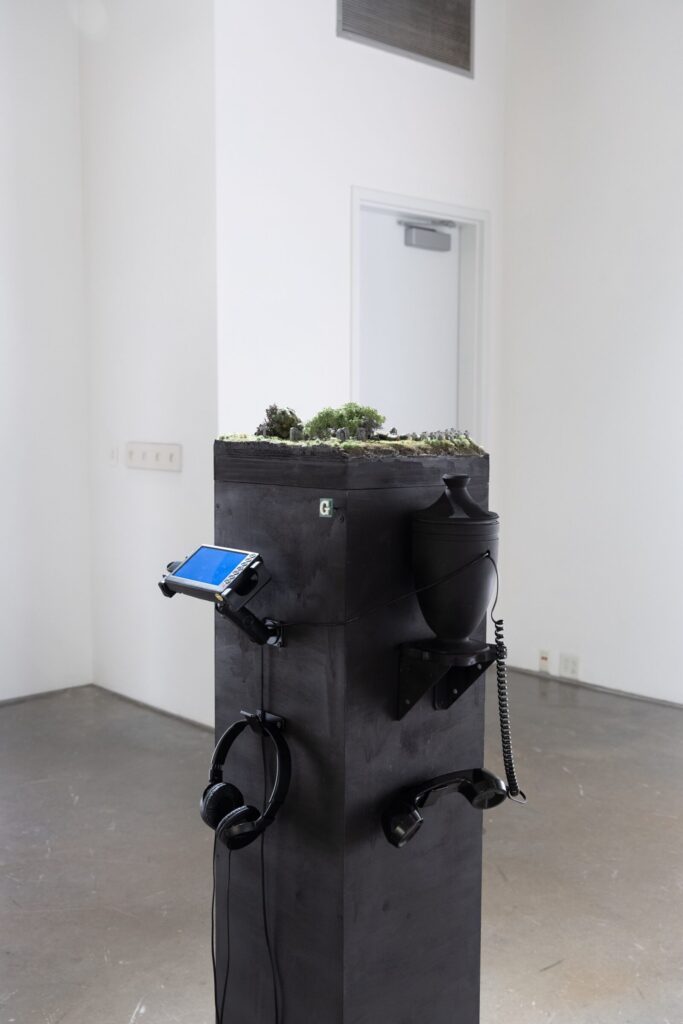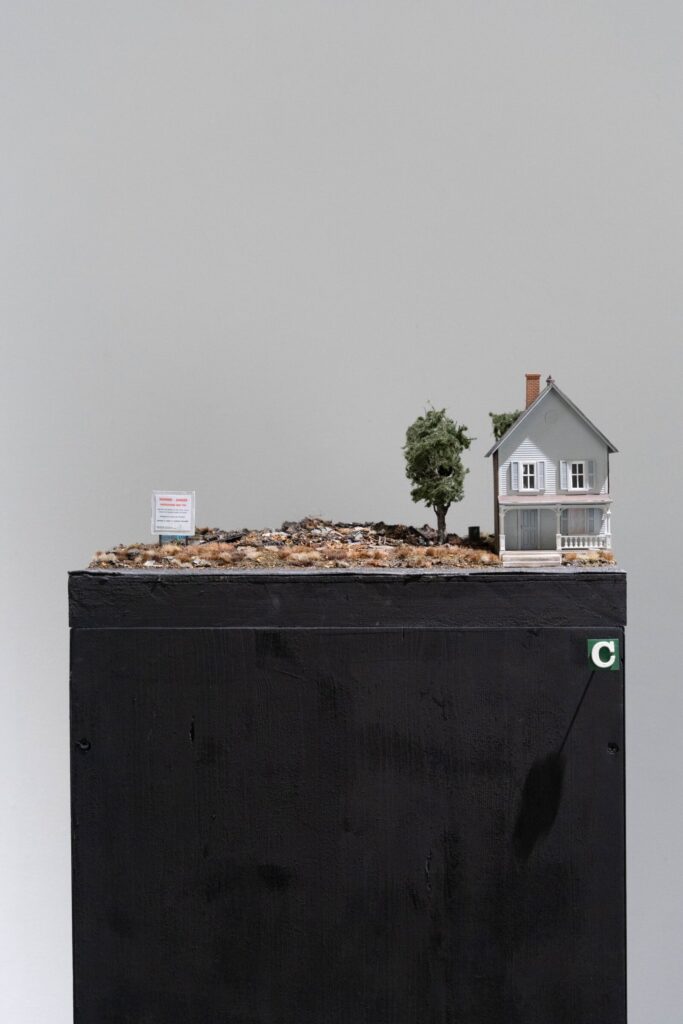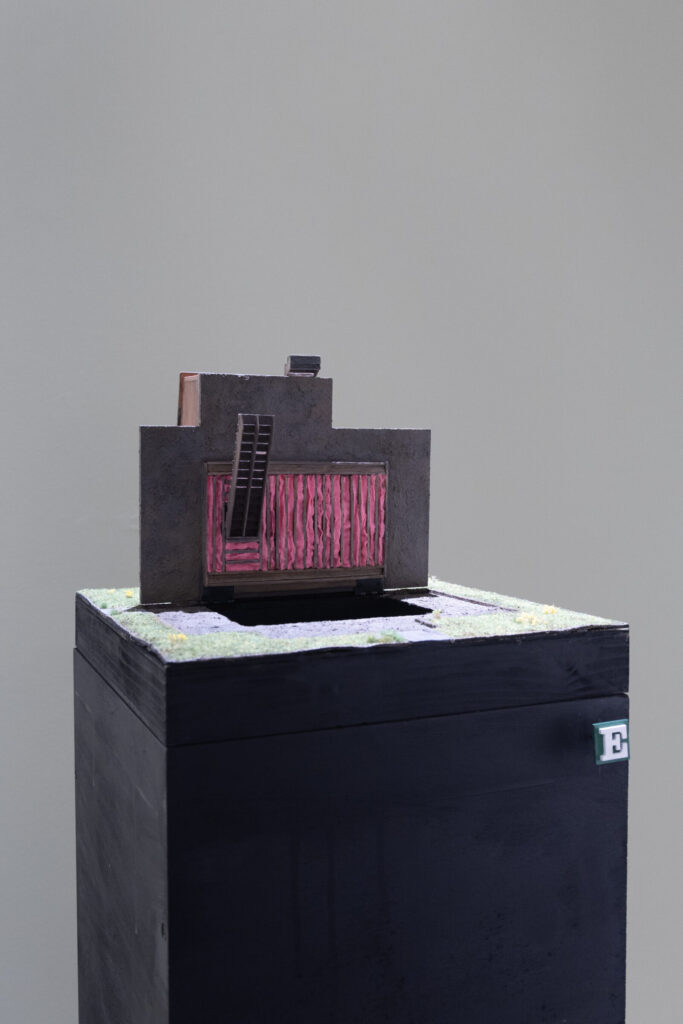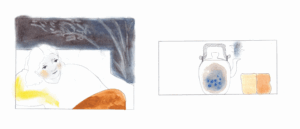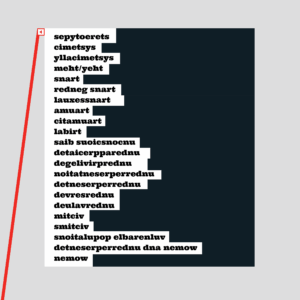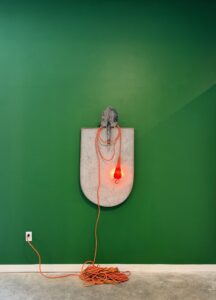There is a world of mineshafts, bore-holes, sub-level corridors, basements, sewers, sinkholes, conduit lines, coal seams, rumpus rooms, and shallow graves. This is an architecture of concrete and asphalt, cables, bricks, bones, mineral deposits, feces, petrified remains, and metamorphic ooze. Here shifting tectonics mirror the veiled unstable topography of the unconscious mind. The myth...
There is a world of mineshafts, bore-holes, sub-level corridors, basements, sewers, sinkholes, conduit lines, coal seams, rumpus rooms, and shallow graves. This is an architecture of concrete and asphalt, cables, bricks, bones, mineral deposits, feces, petrified remains, and metamorphic ooze. Here shifting tectonics mirror the veiled unstable topography of the unconscious mind. The myth of katabasis, a journey to the underworld in search of revelation, is perpetually recycled. A construction sign reads “Caution: Buried Utility,” forewarning a kind of enlightenment in descent.
The act of endoscopy materializes commonalities between corporeal and built infrastructures. The endoscope simultaneously snakes down pipes and the body of a patient in examination. Endoscope stages a series of encounters with subterranean space through scale models, drawings, and video. Each work illustrates an anecdotal history of buried structures coming into view, of vision penetrating beneath the surface of the everyday into the underground of death and desire. Assignations are viewed through a glass block window, erosion and subsidence reveal root structures, coal seams burn in perpetuity, and passageways open up to a hollow earth.
Samuel Horgan is an Interdisciplinary Artist and Writer from Pittsburgh, Pennsylvania. He is a second year MFA candidate at the Lamar Dodd School of Art and a graduate assistant of the UGA Arts Collaborative.
Kelsey Siegert is a second year MA candidate in Art History from Las Vegas, Nevada. She is a curatorial fellow at the Athenaeum and Dodd Galleries, and the treasurer of the Association of Graduate Art Students.
